Landscaping around trees can be a difficult task, and cedar trees come with their own set of challenges. These dense evergreens cast thick shade and significantly reduce the amount of rain that reaches the ground directly beneath their canopy. Plus, their fallen, decomposing leaves increase the acidity of the soil. The trick, then, is to find plants that will thrive in dry, shady, acidic growing conditions.
To help make your job easier, I have compiled a list of plants that grow well under cedar trees, as well as creative ideas and tips for landscaping under cedar trees. That barren spot in your yard can become beautiful with a little creative effort.
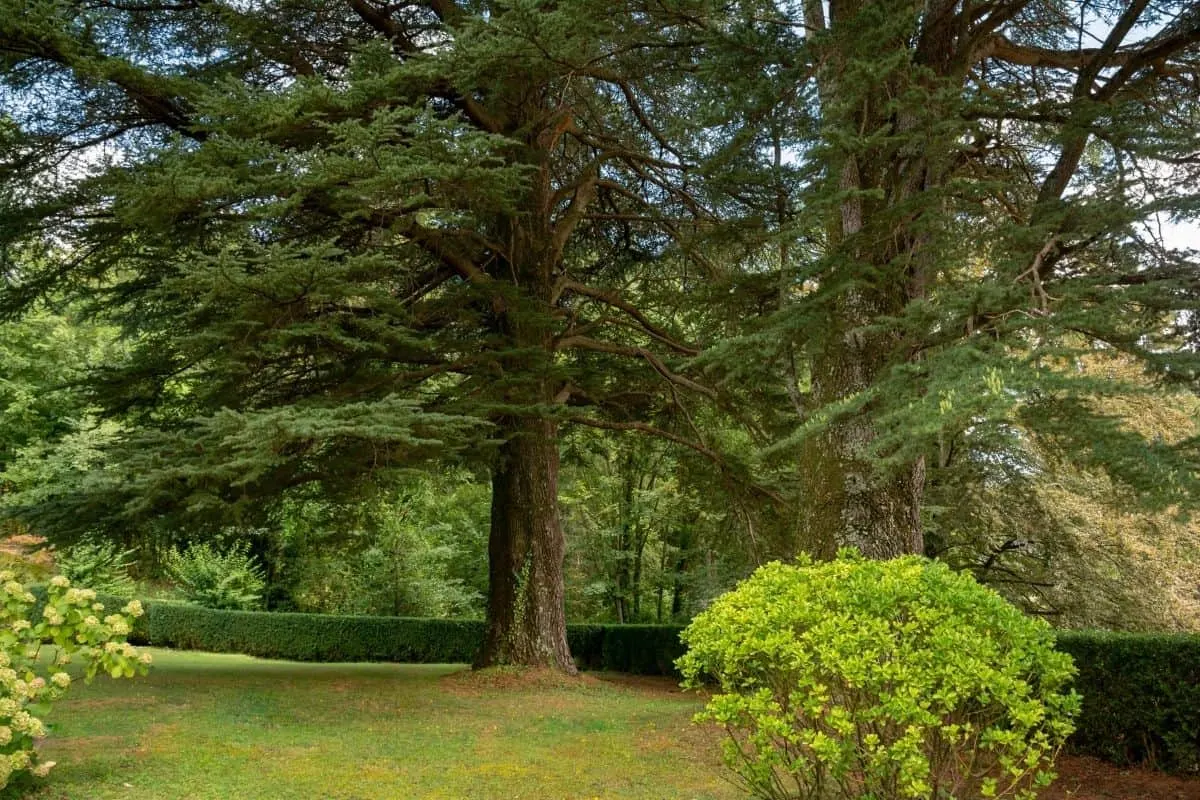
Landscaping Under Cedar Trees
Know your tree
Cedars are wonderfully hardy trees, requiring little to no care or maintenance. They suffer very few diseases and rarely experience any problems. Common uses of cedar trees include windbreaks, hedges, and winter interest.
Confusingly, the common name cedar has been attached to several different genera of trees. True cedars, of the genus Cedrus, belong to the pine family and originate from the western Himalayas and the Mediterranean region.
False cedars include species native to the US, such as western red cedar (Thuja plicata), eastern red cedar (Juniperus virginiana), and incense cedar (Calocedrus spp.), among others from around the world.
With cedar trees spanning such a wide range of genera, it may be helpful to start by identifying which type of cedar or false cedar you have. This will aid you in knowing the specific requirements of your tree as well as how it affects its surroundings. Plus, learning the names, both common and scientific, of the trees on your property can be a rewarding experience in itself.
Respect your tree
When landscaping under a cedar, it’s easy to view the tree as a challenge and focus on the ground around it more than on the tree itself. However, this can lead to problems down the road if care isn’t taken to protect and nurture the tree.
Always be careful when digging under or near a tree, as you can easily damage the roots, which can span as far as two or three times the width of the canopy. The area closest to the trunk is the most vulnerable and also has the densest shade, making it a doubly undesirable location for other plants.
Mulch for moisture
To help protect the tree and prevent moisture loss, spread a two-inch layer of organic mulch around it. As with all trees, ensure that the mulch does not come in contact with the trunk; leave a gap of a few inches.
A layer of mulch not only helps the tree but also the plants grown around it, by retaining moisture as well as suppressing weeds, reducing soil compaction, and otherwise improving soil health.
Choose the right plants
As previously mentioned, the best plants to grow under cedar trees will be those that prefer acidic soils, partial to full shade, and dry conditions. Many native woodland plants fit this description and have the added benefit of requiring very little care, as they have fully adapted to local growing conditions and thus thrive on their own. The less maintenance your plants require, the less disturbance will be caused to the tree roots.
You can also cheat a bit to include some plants that don’t do well in dry or acidic soils by using containers. Plant the thirstiest specimens in lightweight pots to arrange around the cedar tree. Any plants grown around the base of a pot may also benefit from any water that seeps out the drainage hole.
Add some decorations
Plants aren’t the only things you can use in landscaping around cedar trees. Add some decorative rocks, shells, driftwood, or statuettes under the shady branches to fill in that difficult growing space. Woodland creatures are especially cute and fitting under a cedar tree. You could even add the whimsical touch of a tiny door against the trunk to suggest the presence of tiny whimsical folk!
Just make sure that anything placed under the tree isn’t so heavy that it might compact the soil and damage the roots, especially with larger, more established trees with extensive root systems.
Plants that Grow Well Under Cedar Trees
1. Wintergreen (Gaultheria procumbens)
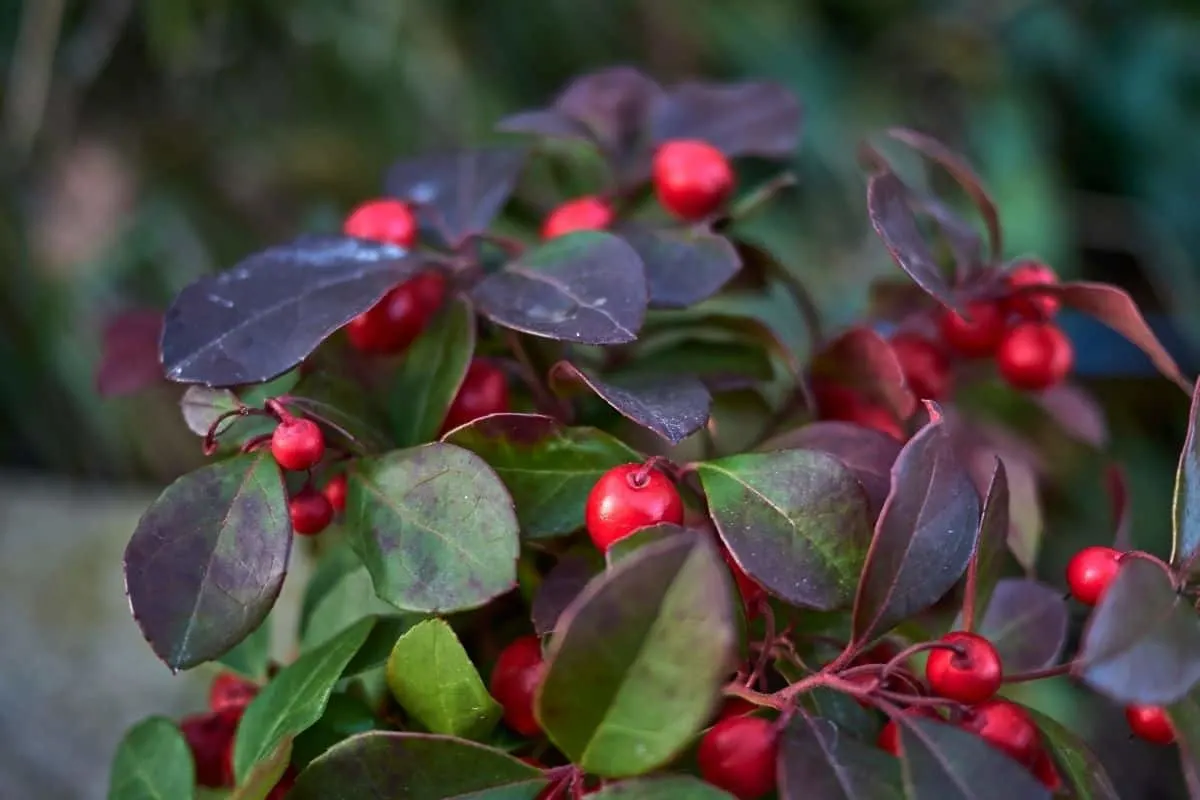
Known by many names, including teaberry, checkerberry, and boxberry, winterberry is a low-growing, evergreen shrub native to the eastern US. Its small, leathery leaves take on a reddish hue in winter and give off a minty fragrance when crushed.
White or pink bell-shaped flowers bloom in summer, followed by scarlet berries that provide winter interest and wildlife food.
2. Heartleaf bergenia (Bergenia cordifolia)
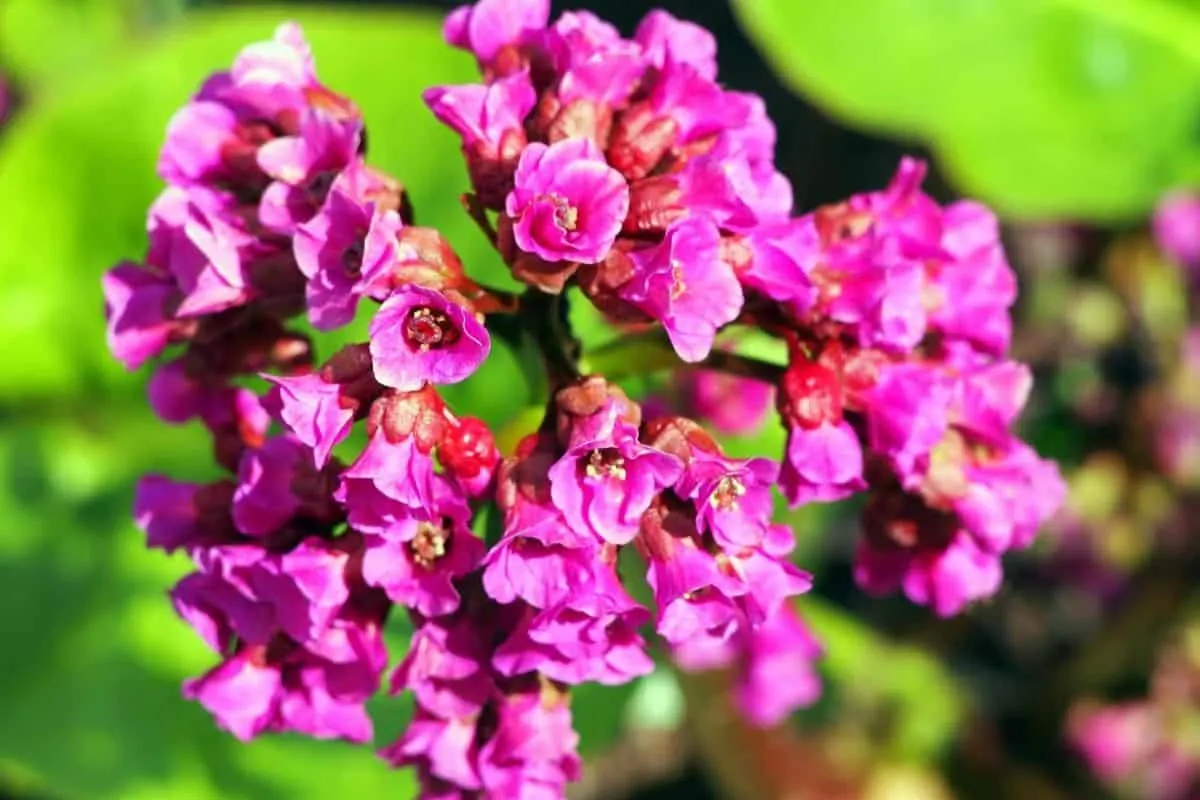
A clumping evergreen perennial from Siberia, heartleaf bergenia is known for its vigor and hardiness.
In summer, showy clusters of tiny, deep pink flowers bloom on thick red stalks high above the large, leathery leaves. The heart-shaped foliage turns a bronzy purple in winter.
3. Partridge berry (Mitchella repens)
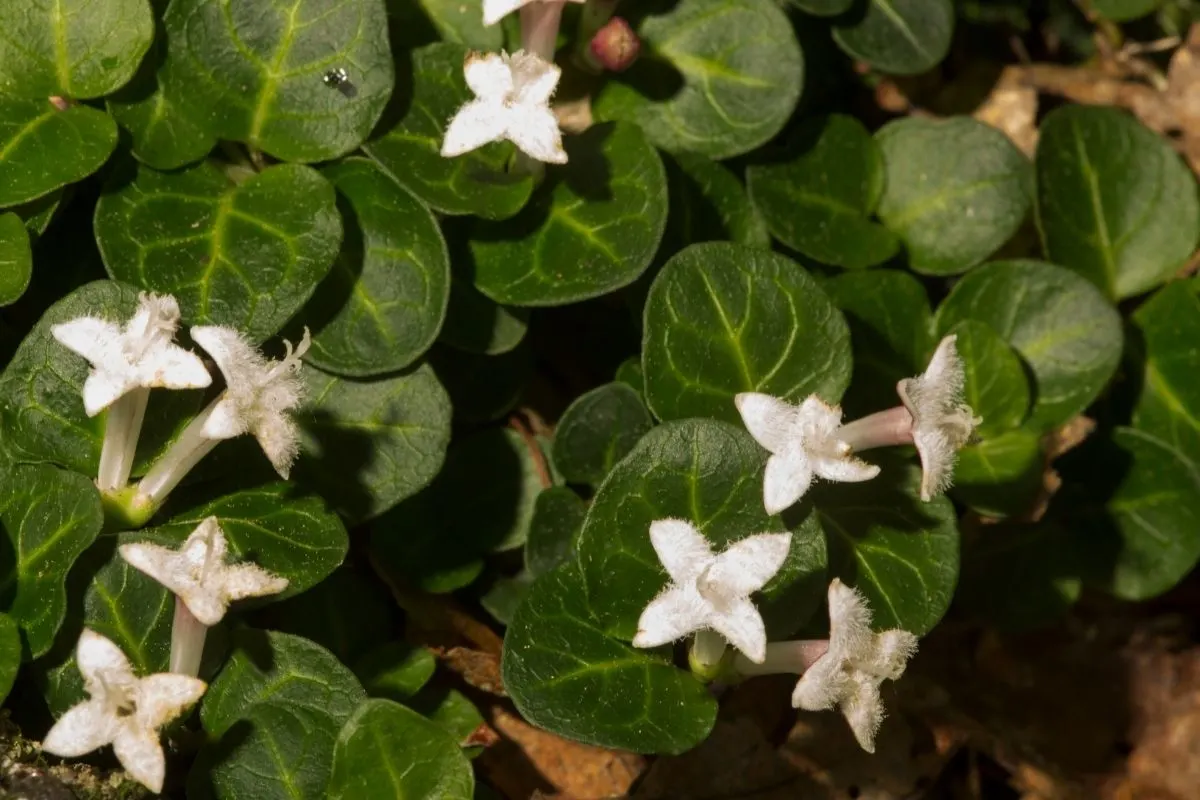
Partridge berry is a ground cover in miniature, growing to just two inches high and favoring horizontal spreading.
The creeping stems of this US native are covered in tiny, glossy, dark green leaves year-round and small, white to pink, trumpet-shaped flowers from spring to fall. The crimson berries that follow last all winter.
4. Foam flower (Tiarella cordifolia)
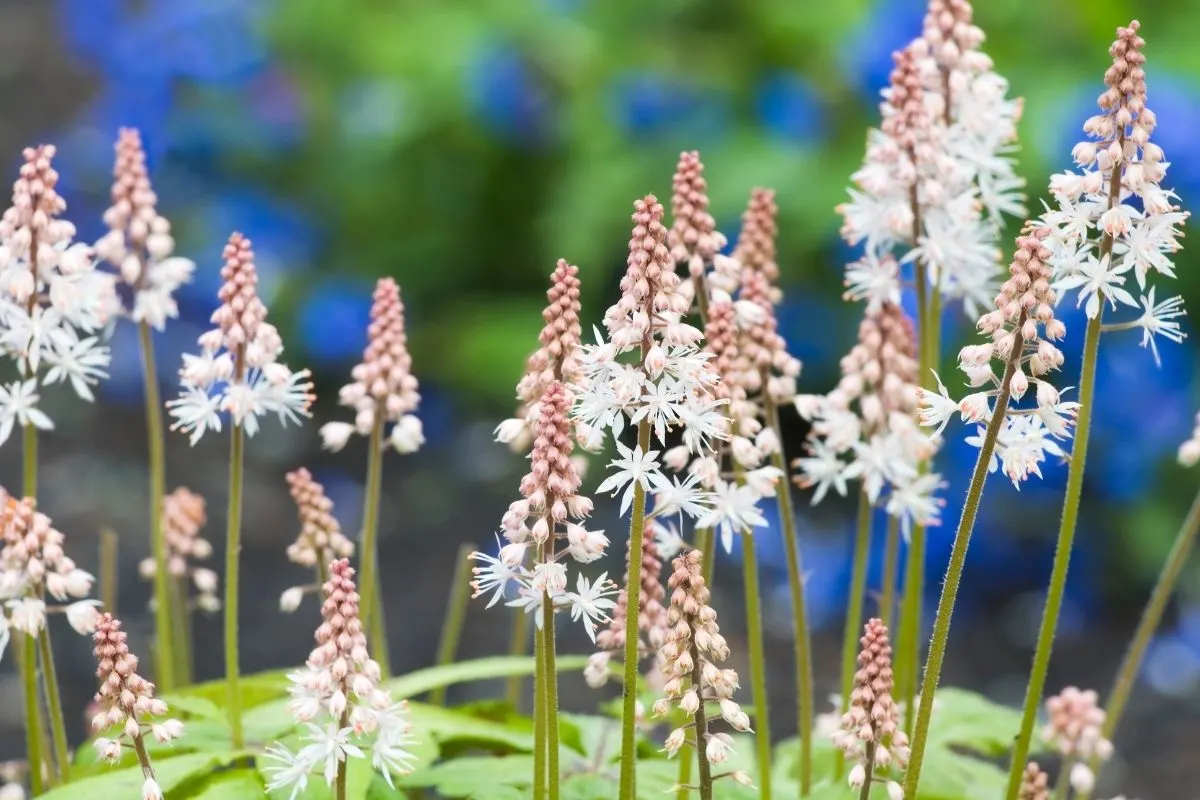
This North American woodland native is evergreen in milder climates and an herbaceous perennial in USDA zones 3-8.
The lush green foliage of foam flowers shows burgundy along the veins in spring and fall and may turn reddish-bronze in winter. In late spring, clouds of pale flowers hover above the leaves on tall stems.
5. Hosta (Hosta spp.)
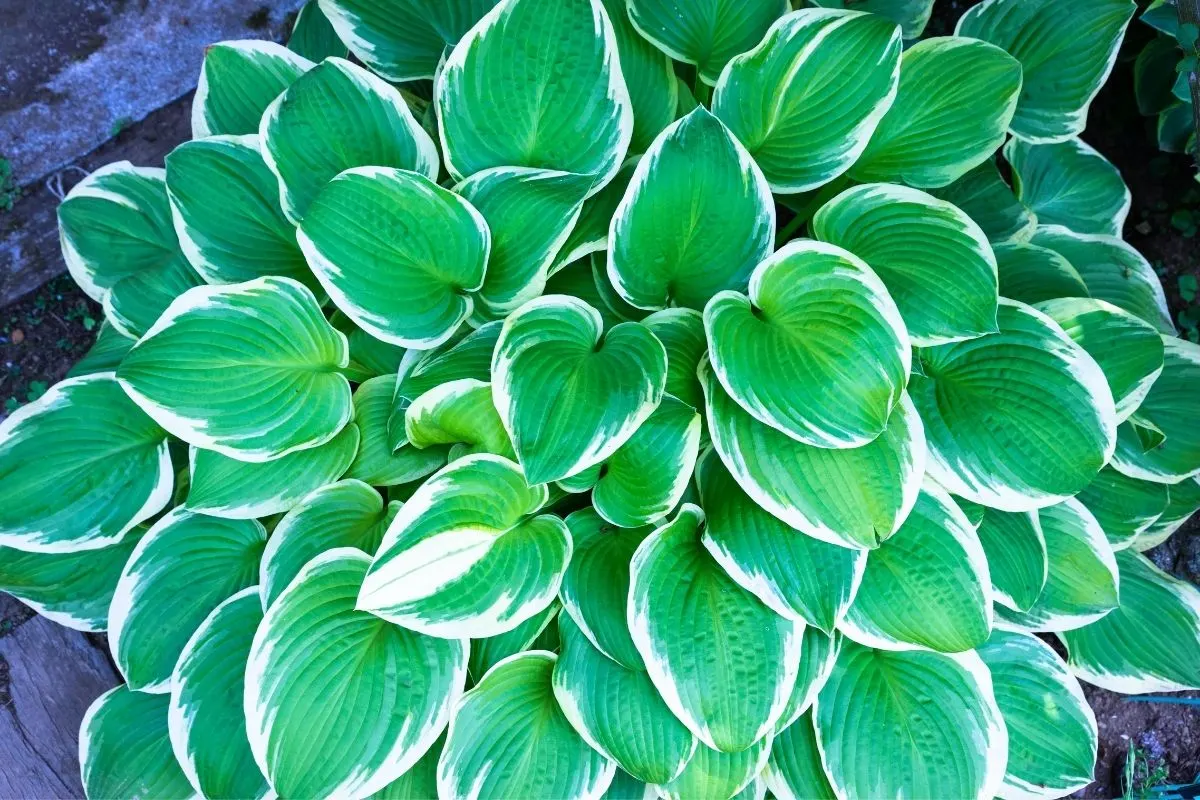
Hostas can be found in just about any shade garden and for good reason. These attractive, low-maintenance perennials feature attractive foliage in a range of sizes, textures, and shades of green (including variegated varieties).
Dainty flowers hang in clusters above the heart-shaped leaves in midsummer.
6. Lungwort (Pulmonaria spp.)
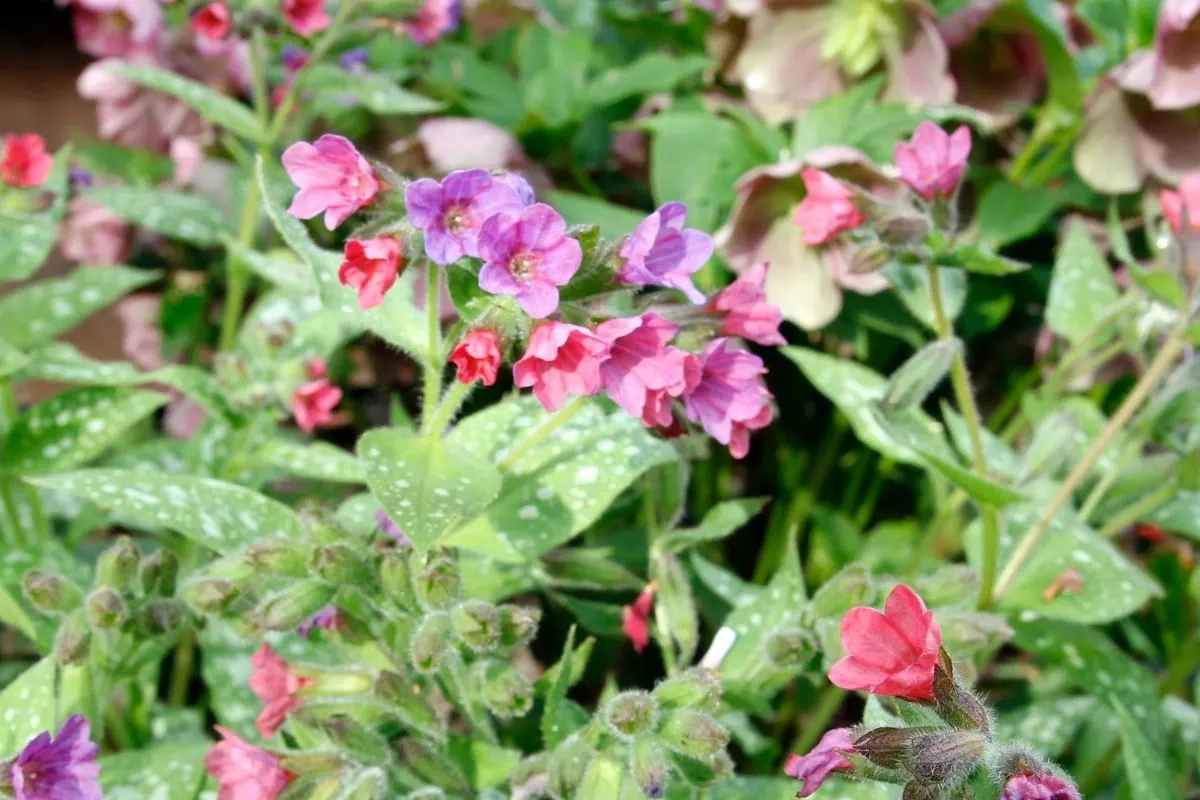
A rhizomatous perennial, lungwort can be either semi-evergreen or herbaceous. Its deer-resistant foliage often features a beautiful speckled pattern. In late winter or early spring, pink, purple, or blue trumpet-shaped flowers bloom in clusters held just above the foliage.
7. Balloon flower (Platycodon grandiflorus)
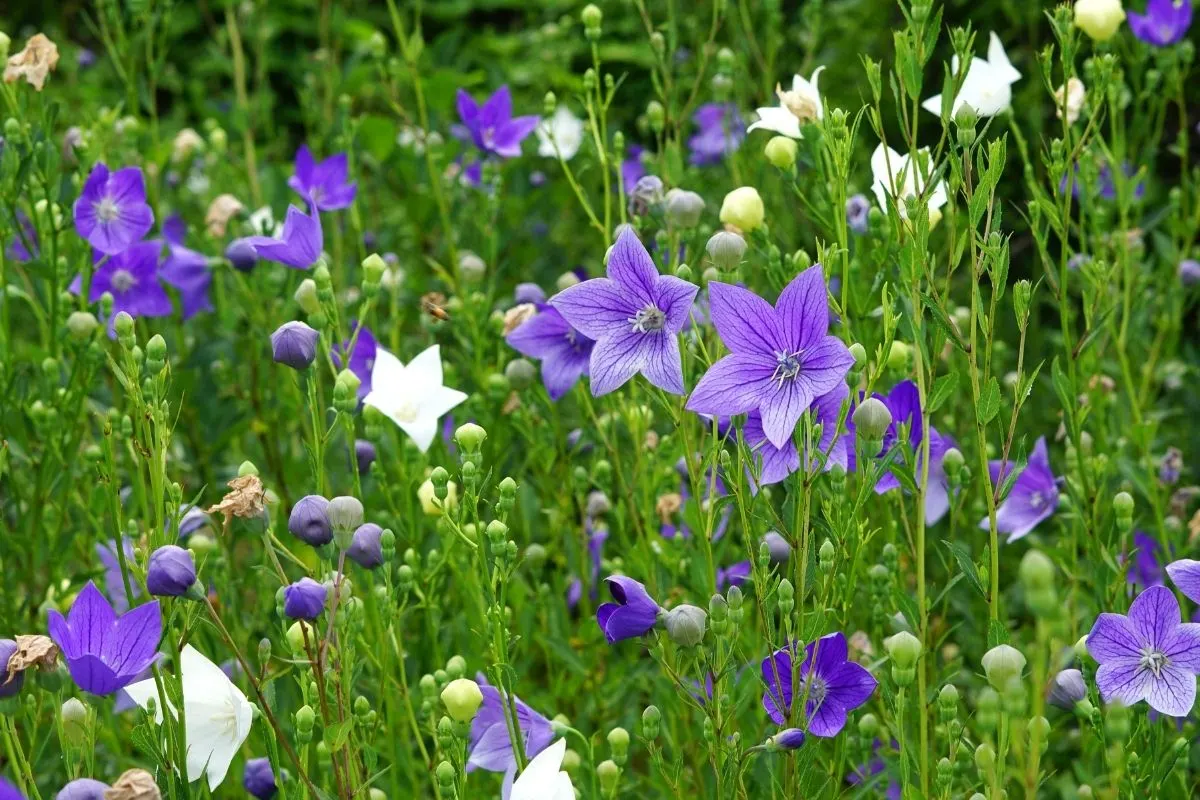
Balloon flower, a compact herbaceous perennial, gets its name from the large, plump, buds that resemble balloons. These buds open to reveal violet, star-shaped flowers and continue to bloom throughout the summer. The narrow, sharply serrated, blue-green leaves turn purple, and sometimes yellow, in the fall.
8. Christmas fern (Polystichum acrostichoides)
Although most ferns require lots of moisture, Christmas fern is remarkably drought tolerant. This North American native grows one to two feet tall, emerging in spring as tightly coiled, silvery-green fiddleheads. Mature fronds are a rich dark green, leathery, and lance-shaped. A low-maintenance fern with a clump-forming habit that makes a great groundcover.
9. Daffodil (Narcissus spp.)
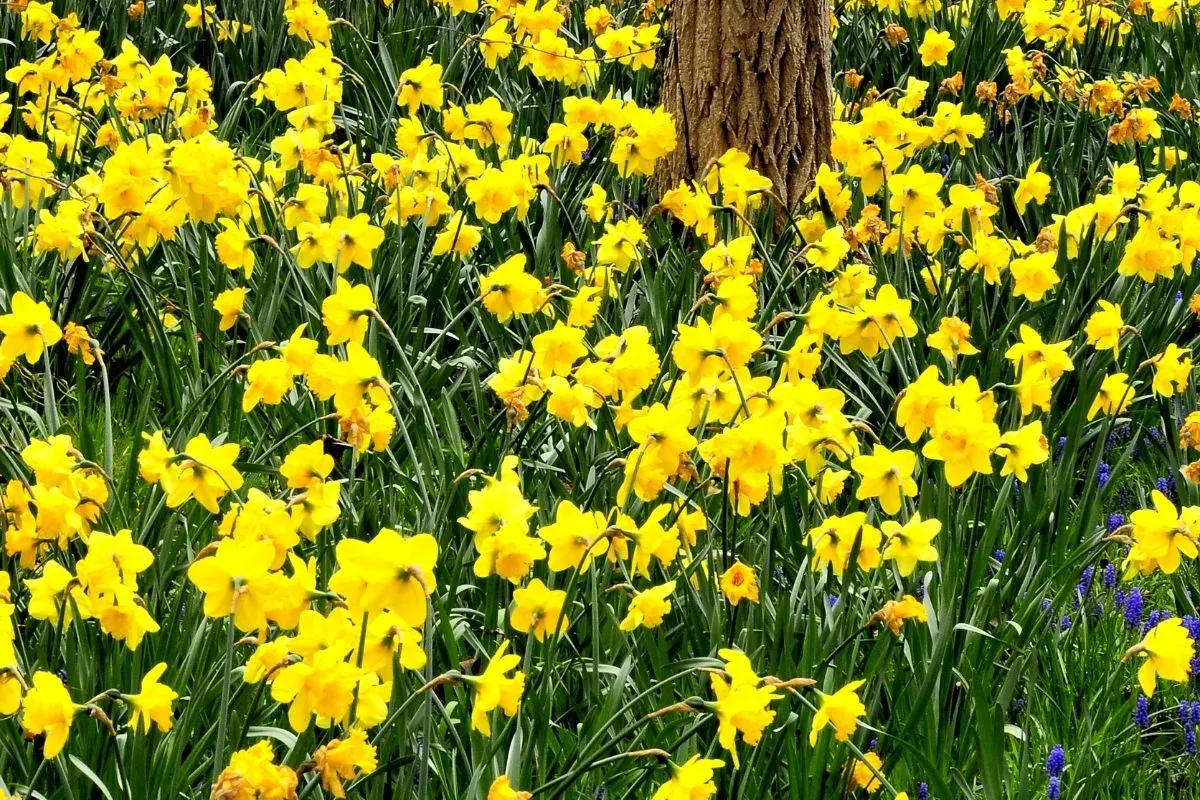
Plant daffodil bulbs around the edge of a cedar’s canopy for bright, cheerful color in spring. They grow well in partial shade and require little to no care after planting. The classic, yellow, trumpet-shaped blossoms of daffodils nicely complement the needly foliage of cedar trees.
10. Fringed iris (Iris japonica)
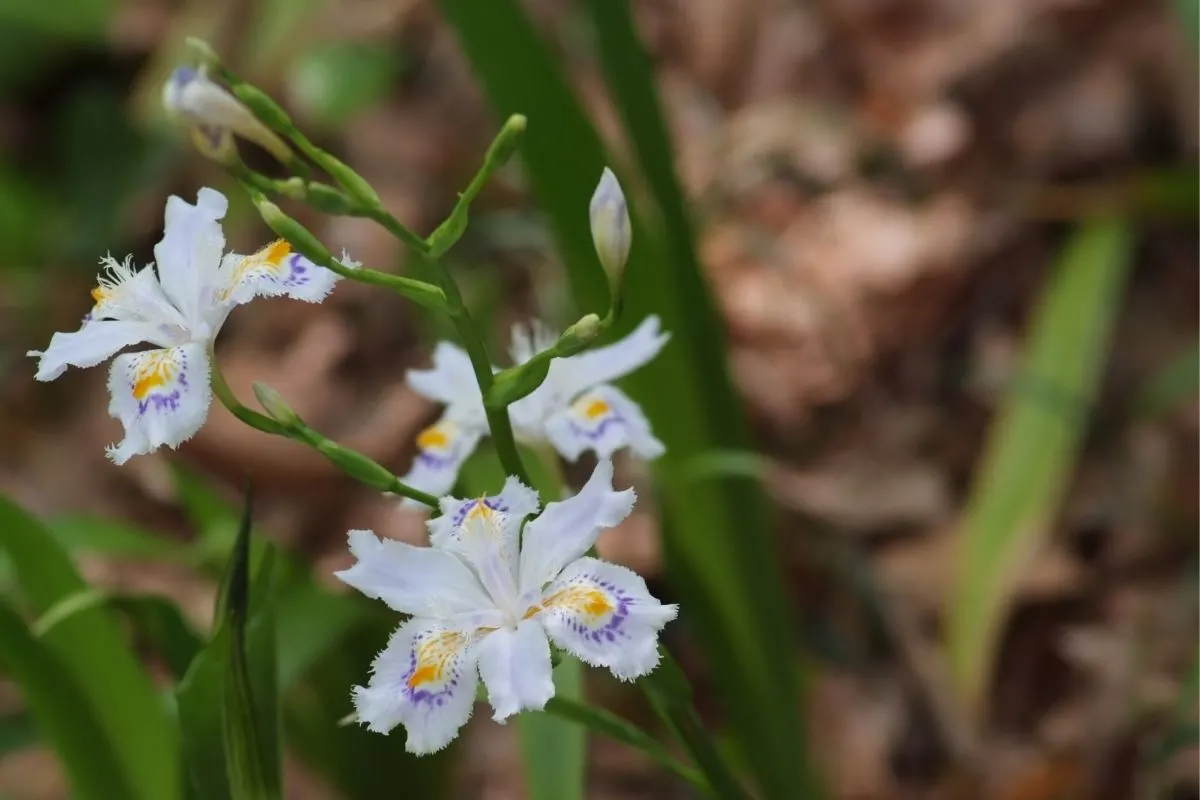
Almost too pretty to be real, fringed iris features fringed, ruffled petals in white or pale blue decorated with bright orange and deep purple patterns. In late spring through early summer, the flowers bloom profusely on tall, branched stems above glossy fans of evergreen foliage.
11. Spring starflower (Ipheion uniflorum)
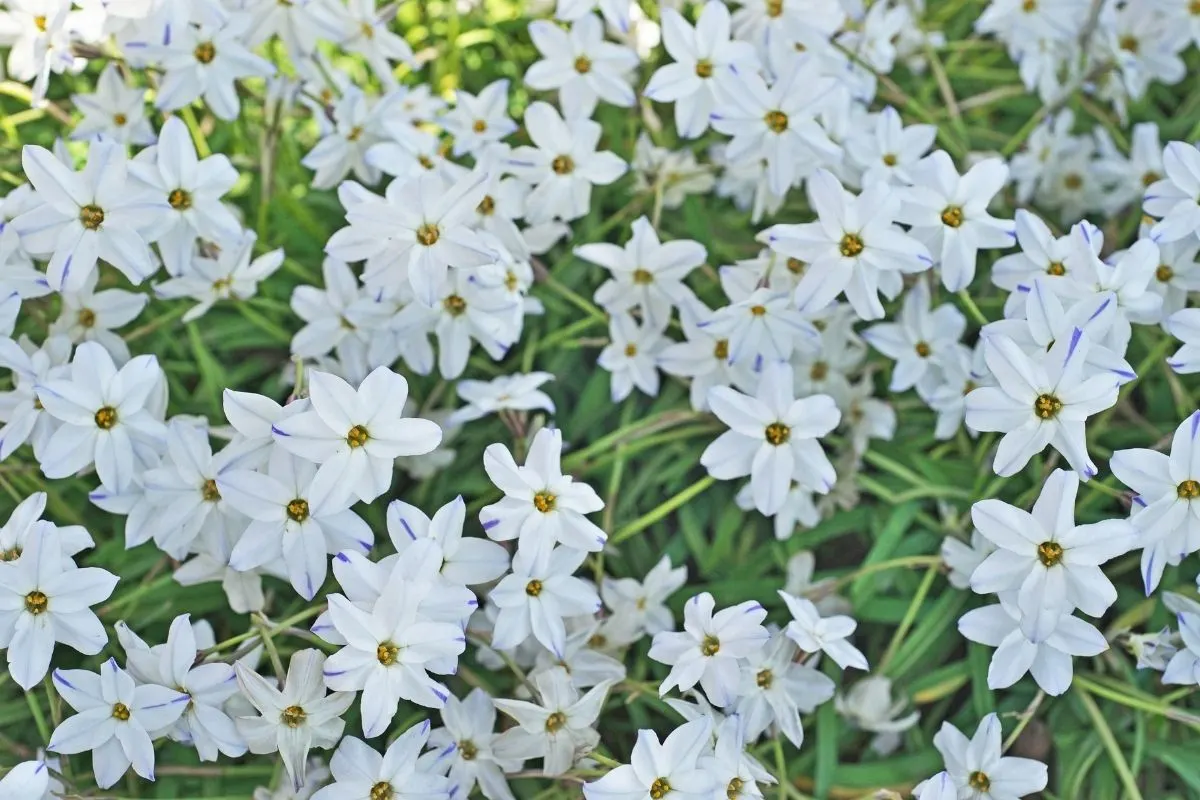
Among the easiest bulbs to grow, spring starflower is especially beautiful planted in sweeping drifts. The small, silvery-white, star-shaped blossoms feature a dark stripe down each petal and bloom in mid to late spring. The strappy, light green foliage grows just three to six inches tall.
12. Wishbone flower (Torenia fournieri)
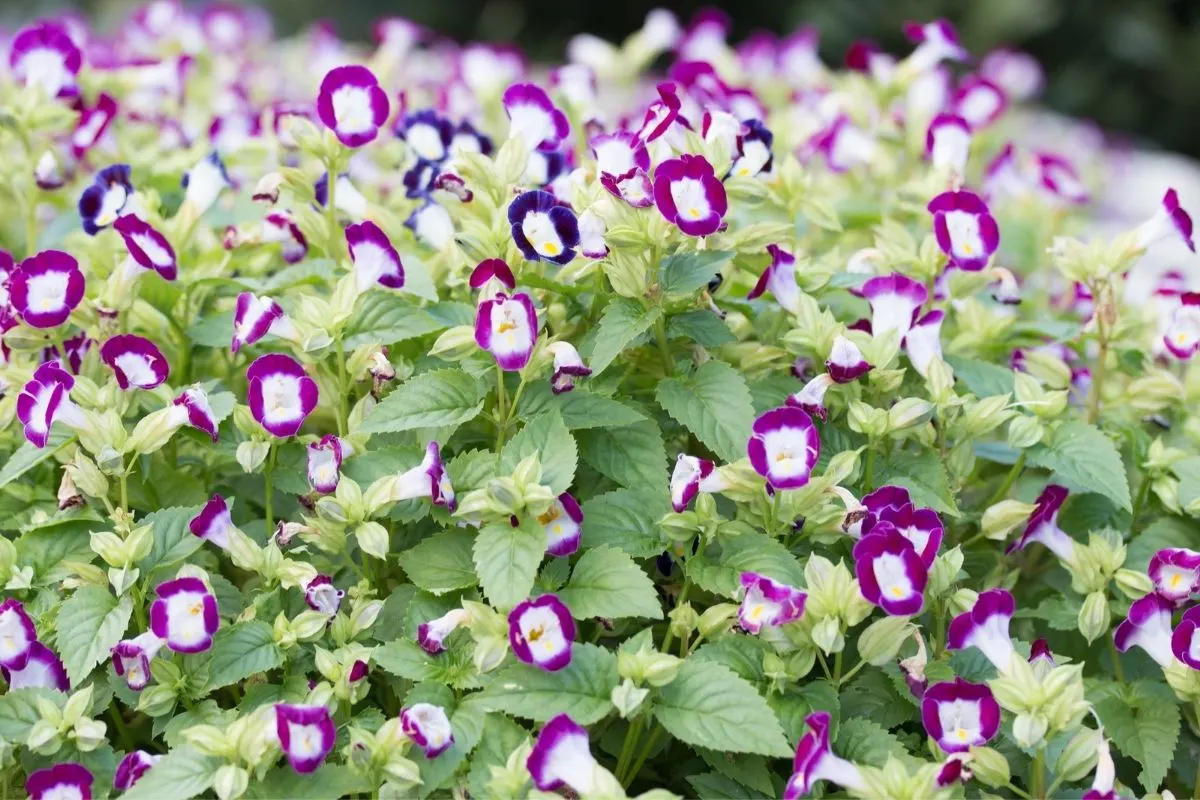
Wishbone flower produces masses of bicolor trumpet-shaped flowers from early summer until frost. Its pale blossoms have deep purple tips, a yellow throat blotch, and two stamens in the form of a wishbone.
Because it is an annual, wishbone flower is best planted beyond the branches of cedar trees to reduce the chances of damaging the tree roots.
13. Wild columbine (Aquilegia canadensis)
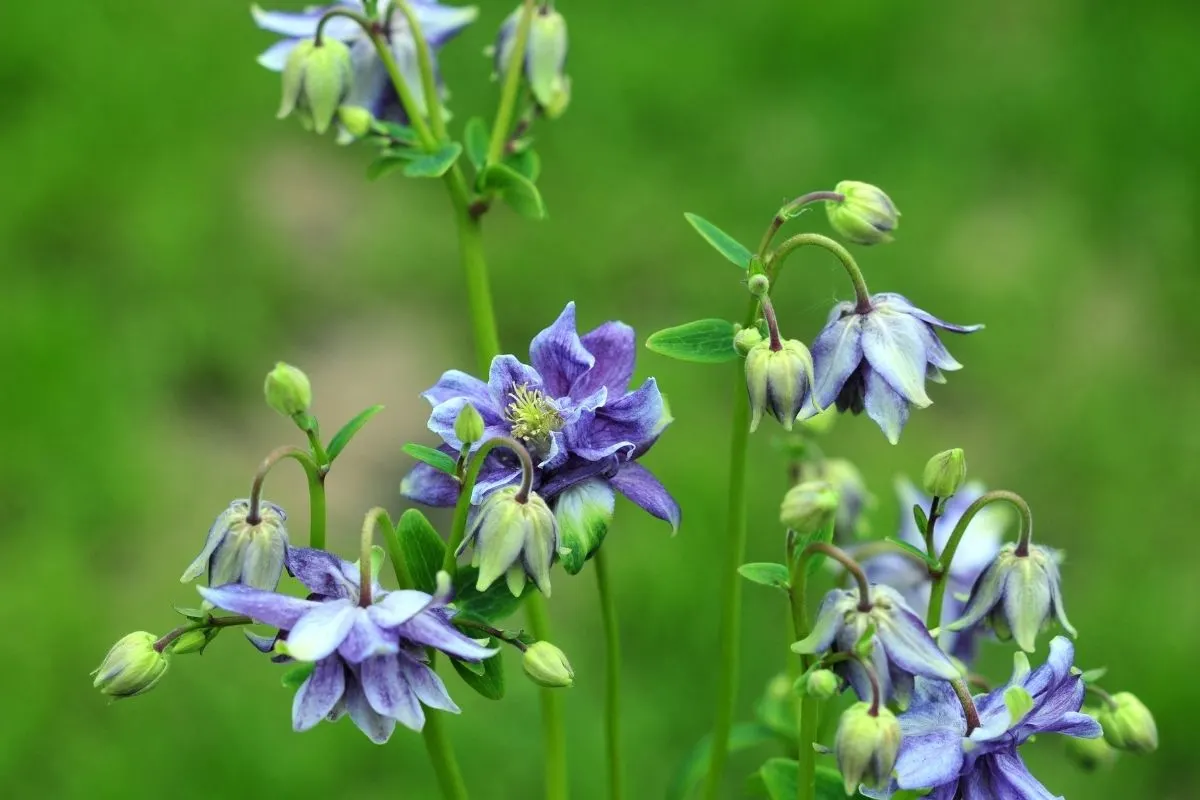
Native to North America, wild columbine makes a wonderful addition to any woodland garden, including flower beds under cedar trees. The unique, spurred, nodding flowers bloom in late spring and early summer with bright scarlet sepals and yellow petals held high on slender stems. Rounded, fernlike foliage forms attractive clumps beneath the blossoms.
14. Japanese anemone (Anemone x hybrida)
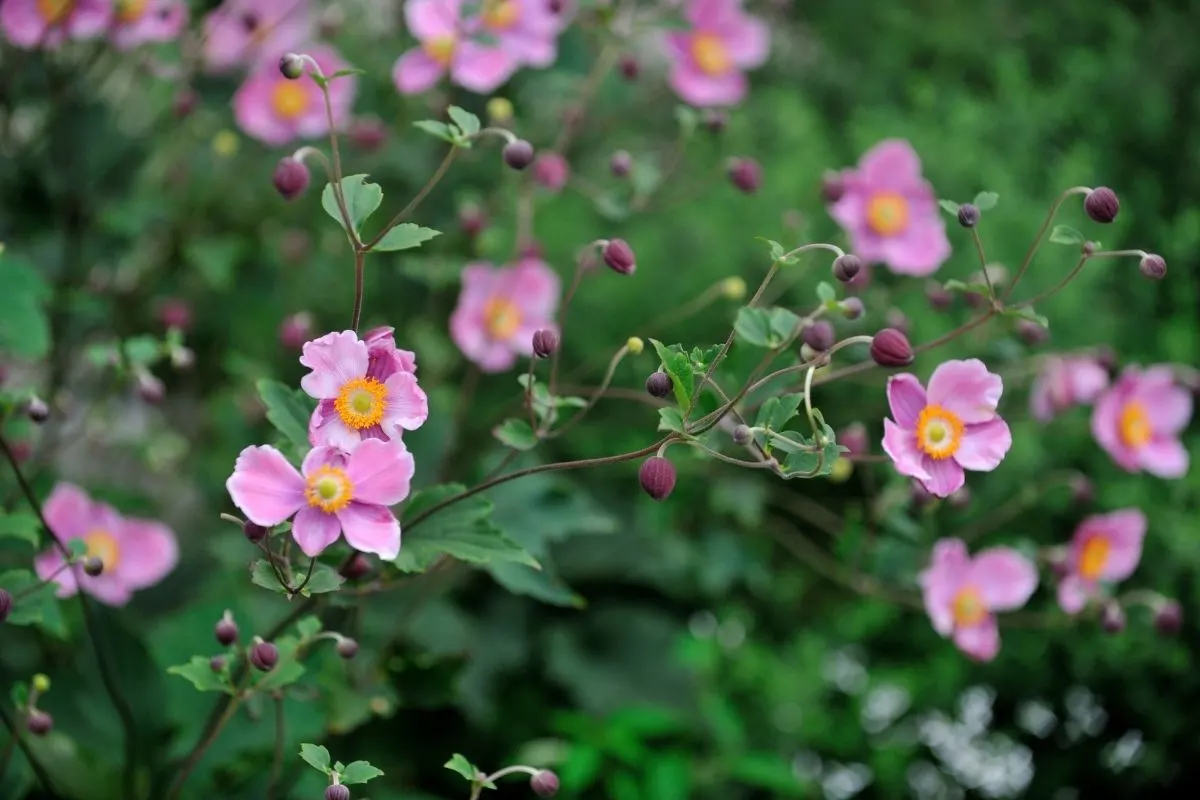
Japanese anemones bloom in late summer and early fall, adding variety to the bloom times of other plants in the garden and lasting up to eight weeks. Their two- to three-inch flowers float on slender stems and range in color from white to deep purple.
Anemones prefer part sun and appreciate moist soil, so they should be planted closer to the edge of a cedar’s canopy.
15. Big root geranium (Geranium macrorrhizum)
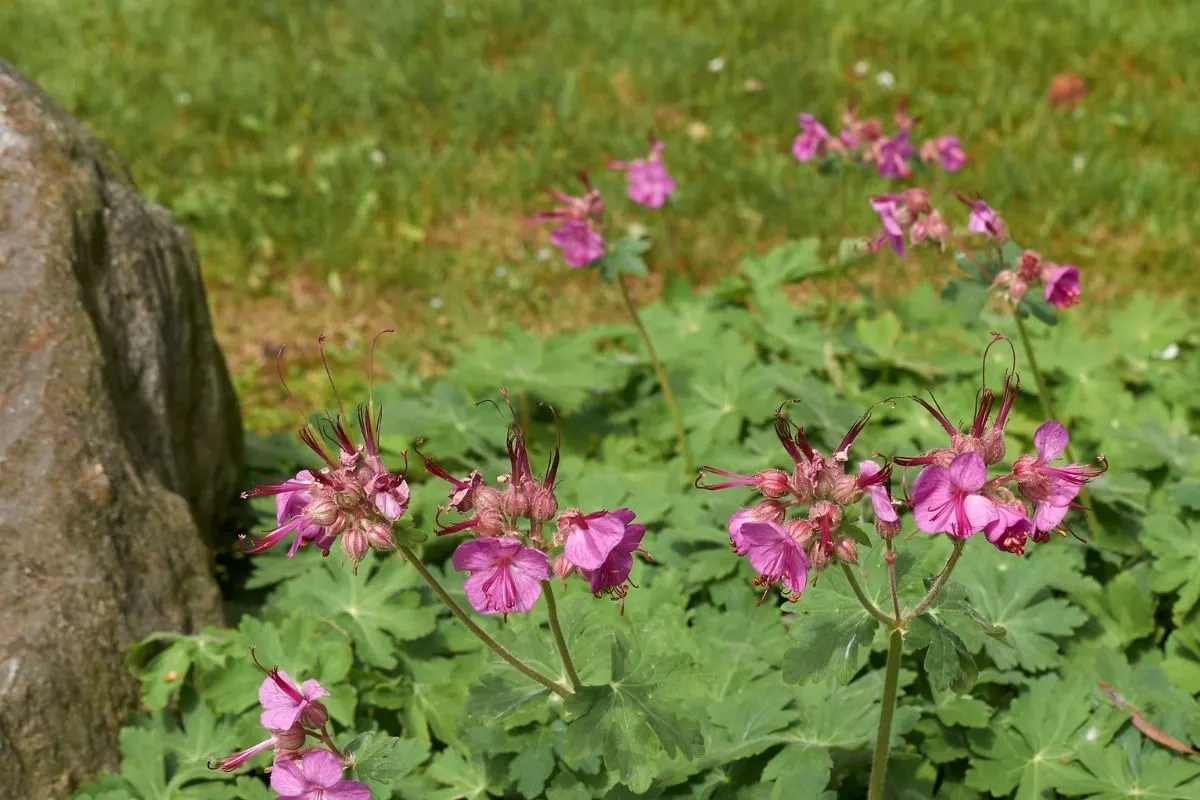
A rhizomatous, semi-evergreen perennial, big root geranium quickly spreads to form a thick, weed-suppressing groundcover. The deeply lobed, gray-green leaves give off a strong fragrance when crushed.
In late spring and early summer, small but showy, long-lasting, purple-pink flowers bloom in clusters.
16. Wild stonecrop (Sedum ternatum)
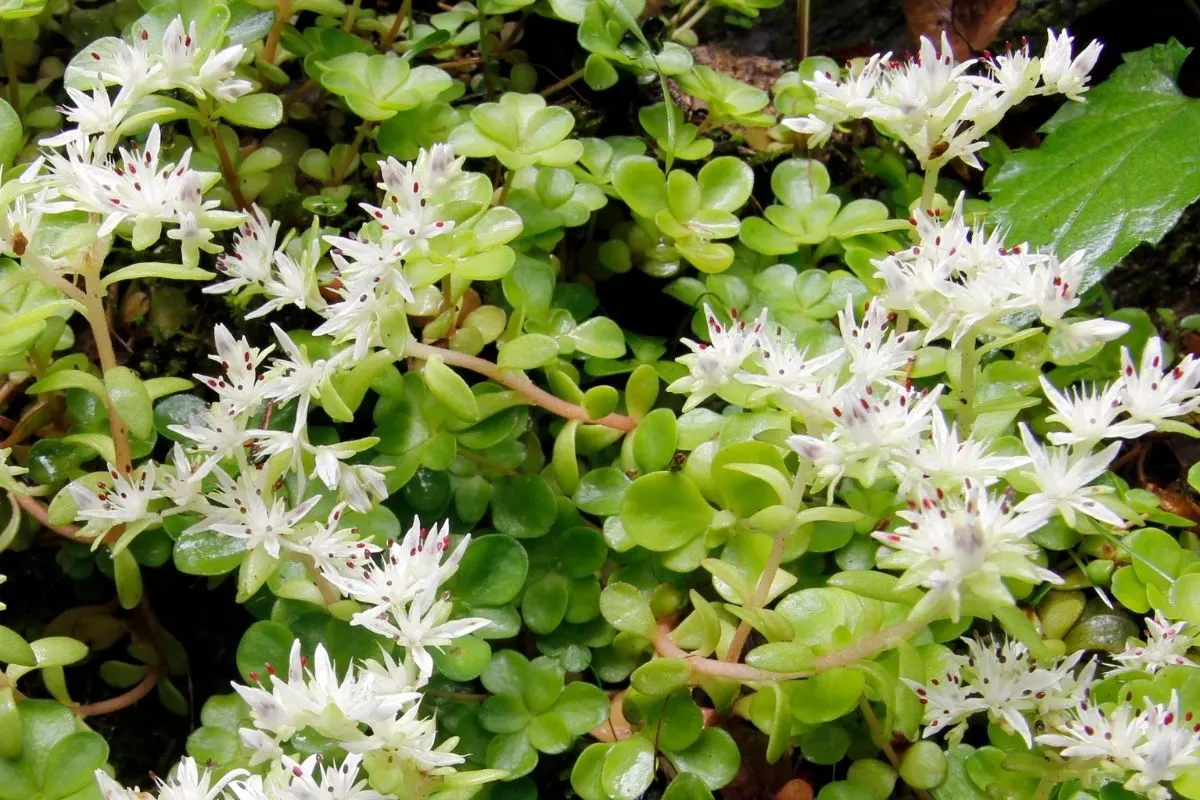
Native to eastern North America, wild stonecrop forms a low mat of light green, fleshy, evergreen leaves. Feathery clusters of white, star-shaped flowers bloom just above the foliage in mid-spring and early summer. A succulent, wild stonecrop requires little care and tolerates drought and neglect.
Finding plants that tolerate acidic soils and dry shade may seem like an unpleasant challenge, but as you can see from the list above, there are plenty to choose among! The space under your cedar tree has changed from a problem area to a blank canvas, and it can soon transform into a beautiful garden bed.
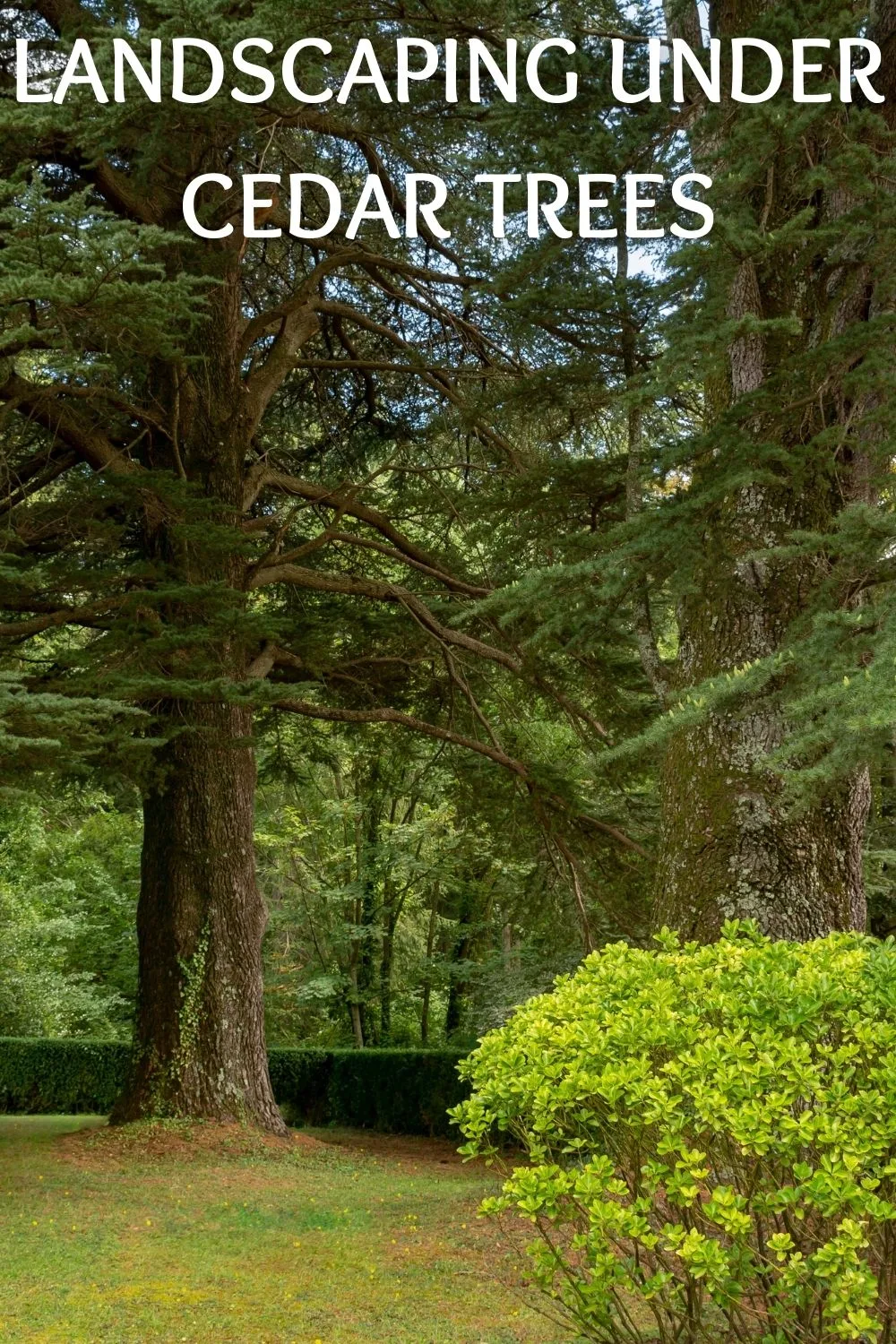


Best Landscaping Ideas For Your Home
Wednesday 17th of August 2022
[…] Landscaping under cedar trees […]